Witnesses of the siege of Leningrad have spoken: personal diaries are revealed at a new exhibition
[ad_1]
A large-scale project dedicated to the siege of Leningrad has opened in the St. Petersburg Manege. Many of the items shown at the exhibition were brought by descendants of siege survivors. And the story itself is structured as a total installation, where the viewer seems to go through those terrible events himself, listening to the memories of eyewitnesses. The plot centers on five characters: a boy, a teacher, a scientist, a violinist and an artist. Each of them has its own terrible story, just like the things that retained the memory of the siege. MK chose the most poignant ones.
1. Bandage dress
By the beginning of the blockade, about three hundred thousand preschool children remained in Leningrad, despite the fact that it was the kids who were the first to be evacuated. Parents had almost no opportunity to feed their children. Therefore, we had to send them to kindergartens. By February 1942, 316 such institutions operated in Leningrad. There were not only preschool children, but also children under 12 years old. There are memories of how they celebrated the New Year: they danced around the Christmas tree, falling from hunger, getting up, holding hands again and falling again. At the exhibition you can find a dress made by a mother for her ten-year-old daughter, whom she was forced to send to kindergarten. The dress is made from starched medical bandages. There was no other fabric. This dress has survived to this day in the Pedagogical Museum named after K.D. Ushinsky. Incredible, but true: despite all the horrors, during the blockade in Leningrad, preschool Olympiads were held, children’s plays were staged, and concerts of solo and choral children’s singing were organized.
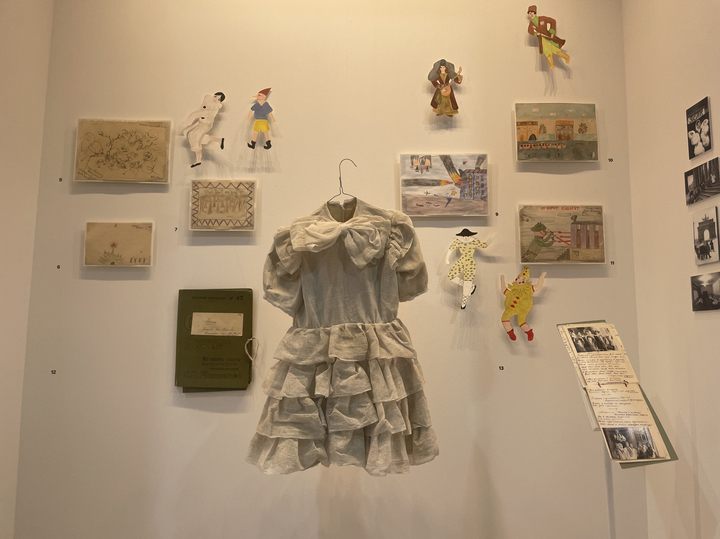
2. Cap of hope
One of the exhibits is a blue cap that a pregnant woman sewed for her unborn child during the hungriest days of the siege. Lena did not know whether she would be able to bear the child, how and where she would give birth. But she believed in the best and spent nine months sewing clothes for the baby. One of these items can be found at the exhibition. The cap is embroidered with a cross. It has blue flowers, mushrooms with red caps, and ladybugs. The birth took place in the winter of 1941–1942, when the daily ration dropped to a meager 125 grams, there was no electricity, and there was no firewood. The girl gave birth right in her fur coat at temperatures below zero. A girl was born. 24 days later she was gone. All that remained was this cap and a wooden box where the woman kept threads, needles, ribbons, and wool.
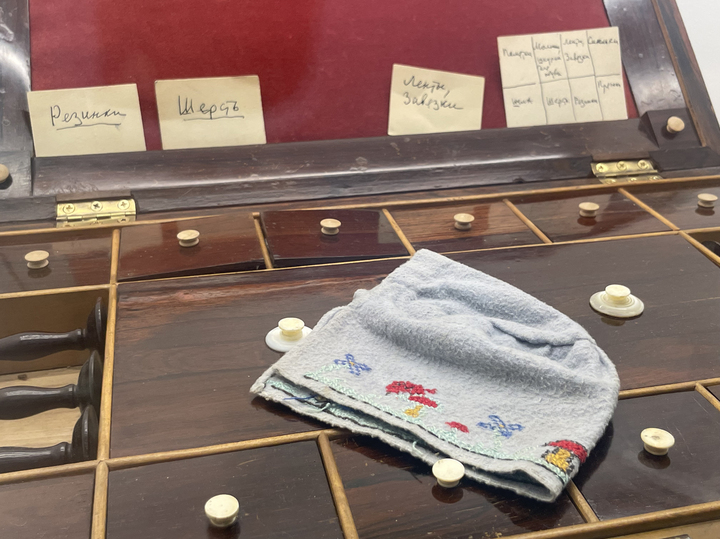
3. Cabbage soup from hogweed
In January 1942, Leningrad was on the verge of an epidemic. Infections, dysentery, typhus, and diphtheria threatened to destroy the remnants of the city’s depleted population. To combat the infection, employees of research institutes came up with the most incredible ways to fight it. Thus, the Bezzubov Research Institute of the Vitamin Industry invented a vitamin preparation based on pine needles, which could be prepared at home, as well as an anti-scorbutic tincture, and came up with various recipes based on wild plants. Artists made detailed pictures of these recipes and distributed them to people. Who would have thought that dandelion leaves mixed with a spoon of salt and two tablespoons of vinegar could make a nutritious salad, and the dangerous hogweed could make quite passable cabbage soup. Every day in Leningrad, 3.5–4 thousand people died from dystrophy. The recipes invented by scientists have saved many lives. Here is a page from an album with such recipes.
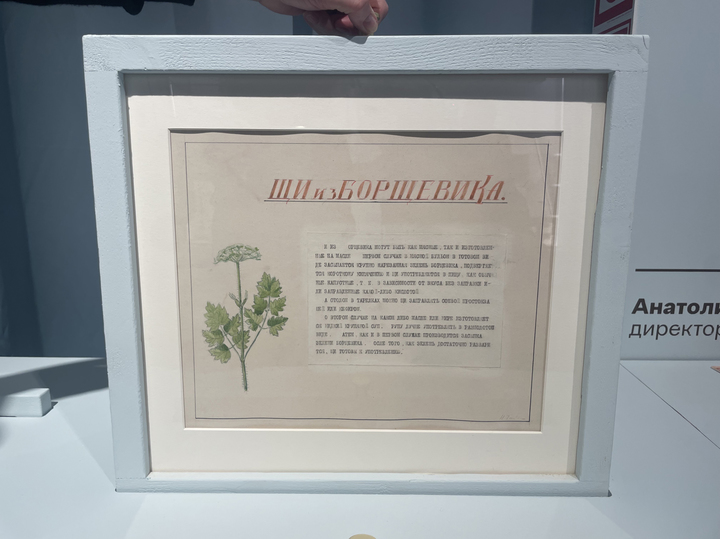
4. Wedding shirt
It’s hard to believe, but during the years of the blockade, almost 15 thousand marriages were registered in Leningrad. People never stopped loving and believing in the best. On display is a wedding dress, which the bride repurposed from a nightgown, decorating it with lace and embroidery. There are stories that the newlyweds gathered guests and, instead of real treats, placed plates with painted fruits and vegetables on the table. From a distance they looked natural. So just looking at it made it more satisfying.
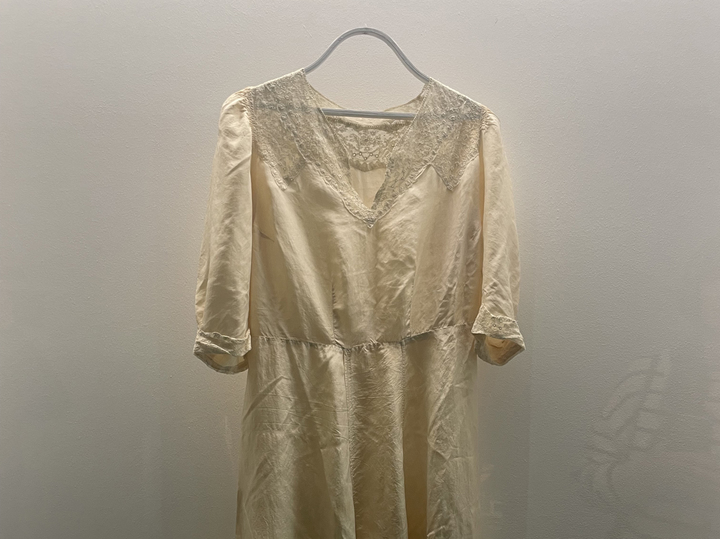
5. War and a loaf of bread
It was difficult for the children to think about anything other than food, no matter how hard the adults tried to distract them. The exhibition includes a drawing of three-year-old Shurik dated January 29, 1942. The black scribbles are reminiscent of an abstract painting, but with a very clear emotion. The caption speaks for itself: “This is war, that’s all, and there’s a bun in the middle.”

6. Life for two pennies
One of the walls of the exhibition is empty. In the middle there is only a small display case, in which behind the glass there is a coin with a denomination of two kopecks. It was brought to the exhibition by a descendant of a woman who had to make a terrible choice. When, left with two children, she realized that she could not feed herself and the children on an insignificant ration, she decided to save at least one life. Then she threw this coin to choose which of her two sons to give a chance. From that moment on, she gave all the food to one child, whom fate determined. Dying, she hung a sheet of paper on the door of her apartment with the caption: “There is a living child inside. Help him.”

7. Not by bread alone
The cultural capital remained cultural even in the most difficult times. The collections of the Russian Museum and the Hermitage were evacuated. Art historians and artists who remained in the city helped pack them. Many made sketches of museum halls where empty frames hung. Museum staff continued to give tours of them, talking about the works as if they were still there.
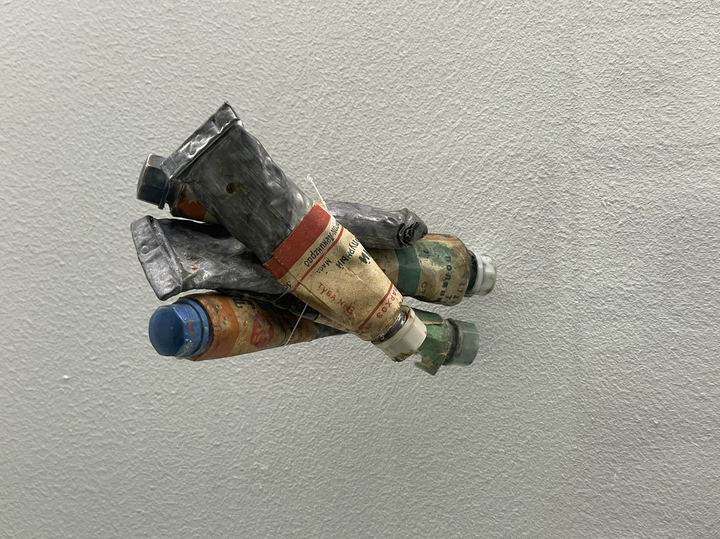
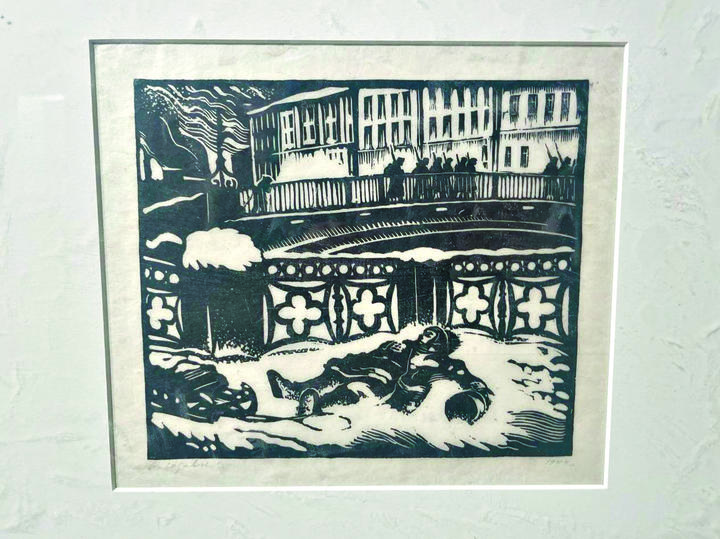
The idea of holding the first siege exhibition in Leningrad arose in early December 1941. In two months, an exhibition of seventy works was assembled in the halls of the Leningrad Union of Artists. Every day the artists brought new works. As a result, more than three hundred gathered. Then, by some miracle, they could be taken to Moscow and shown in October 1942 at the Pushkin Museum. In this way, the country will learn about what was happening inside besieged Leningrad. Despite the hunger, the artists continued to paint, and the Union of Artists even gave them paint on cards. At the exhibition there are several tubes from the sketchbook of the artist Yaroslav Nikolaev.
Newspaper headline:
Siege of Leningrad: personal diary
[ad_2]
Source link






